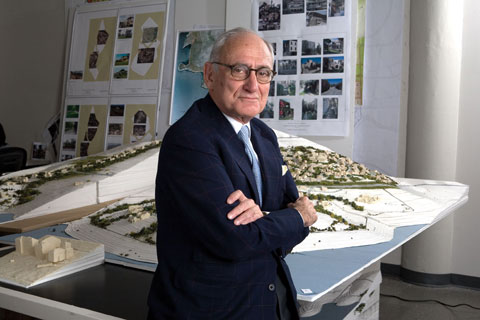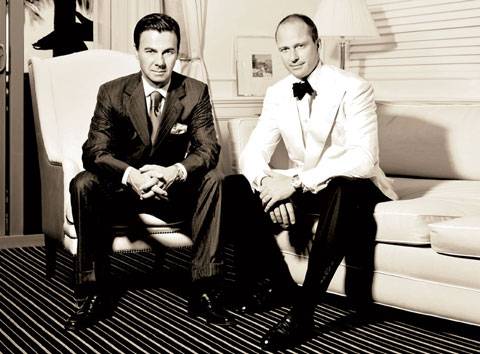Similar to now fashionable Brooklyn, Stern said that he would have never predicted super-luxury buildings being erected around-and in a few cases, on top of-the High Line, which was an abandoned track. The sinuous High Line stretches for about a mile-and-a-half through what was not long ago a fairly seedy neighborhood. Ritzy hotelier André Balazs, among others, have begun developing around it.
Despite years of neglect, the High Line had a number of powerful preservationist saviors over the years-including Stern himself. While some might not expect the traditionalist Stern to champion the High Line, that’s not the only time he’s confused critics. Stern, along with the writer Tom Wolfe, tried in vain to save 2 Columbus Circle, the ultra-modern “lollipop building,” that will soon be radically transformed into the Museum of Art and Design.
“We’re always looking in New York, no matter what borough or what neighborhood, for some thing that is unique, to give that neighborhood an identity,” said Stern of his fellow preservationists.
And while downtown is being spruced up, Stern keeps busy uptown, too: He’s designing the Museum for African Art, slated for completion in 2009. “It’s the gateway to the Upper East Side from Harlem,” said Stern, of the forthcoming museum, located at the top of Museum Mile.
So whether designing a penthouse in the sky for a high-powered CEO, or an academic building, Stern’s process is remarkably similar to decades earlier-making preliminary sketches and sculpting clay. “I don’t even know how to use a word processor,” said Stern, “or what do you call that, a laptop!” Of course, Stern understands the computer’s power in today’s architecture world, and his remarkable team-especially those younger staffers living in Brooklyn-are well versed in the latest technology.
Nevertheless, if there’s one piece of advice that the celebrated architect still hopes to offer the next generation of architects, its that they do “not lose contact with making things with their hands, looking with their eyes.”
“My mantra as an educator is that while you must always go forward and take advantage of new situations that come to us as architects, we don’t need to cast away what we have already learned,” said Stern. “The past must teach us.”





















